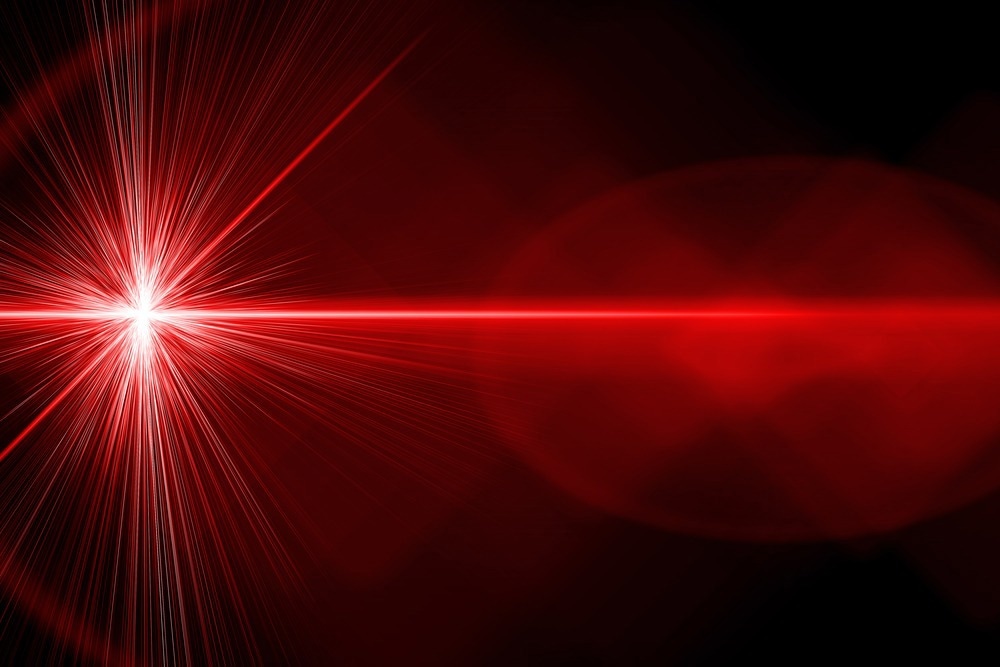Researchers at the University of Rostock, in partnership with scientists of the Max Planck Institute for Solid State Research in Stuttgart, have produced and measured the shortest electron pulse to date by employing ultrafast laser flashes.

Image Credit: Juergen Faelchle/Shutterstock.com
The electron pulse was produced by employing lasers to eliminate electrons from a minute metal tip and lasted just 53 attoseconds, i.e., 53 billionths of a billionth of a second. This work has created a new speed record in the artificial control of electric currents in solid materials.
The study paves the way for progressing the performance of electronics and information technologies, as well as for creating novel scientific methodologies for visualizing occurrences in the microcosm at ultimate speeds.
The reason behind the decreased or increased performance speed of a computer and other electronic equipment is the time it takes for electrons—some of the smallest particles of the microcosm—to stream out from tiny leads within the transistors of electronic microchips and to generate pulses.
Techniques to accelerate this process are key to advancing electronics and their applications to maximum performance limits. However, what is the briefest possible streaming time of electrons from a minute metal lead in an electronic circuit?
By utilizing extremely short laser flashes, a research team guided by Professor Eleftherios Goulielmakis, Head of the Extreme Photonics Laboratory of the Institute for Physics at the University of Rostock, and partners at the Max Planck Institute of Solid State Research in Stuttgart employed advanced laser pulses to expel electrons from a tungsten nanotip and to produce the shortest electron burst ever created. This study has been published in Nature.
Although the concept that light can expel electrons from metals has been known for a long time—Einstein was the first to illustrate the method—the process is very challenging to control. The electric field of light alters its direction approximately a million billion times per second, making it hard to manipulate the way it tears off electrons from the surface of metals.
To surpass this challenge, the Rostock researchers and their co-workers used a contemporary technology that was previously developed by their team—light field synthesis—which enabled them to reduce a light flash to less than a complete swing of its own field. Sequentially, they employed these flashes to light up the tip of a tungsten needle to push out electrons into a vacuum.
“Using light pulses that comprise merely a single cycle of its field, it is now possible to give electrons a precisely controlled kick to set them free from the tungsten tip within a very short time interval” explains Eleftherios Goulielmakis, head of the research group.
However, the challenge could not be surpassed unless the team also discovered a method to measure the shortness of these electron bursts. To resolve this obstacle, the researchers built a new type of camera that can capture snapshots of the electrons during the brief period the laser is expelling them out from the nanotip and into the vacuum.
The trick was to use a second, very weak, light flash. This second laser flash can gently perturb the energy of the electron burst to find out how it looks like in time. It is like the game ‘What’s in the box?’ where players try to identify an object without looking at it. but just by turning it around to feel its shape with their hands.
Dr. Hee-Yong Kim, Study Lead Author, University of Rostock
But how could one employ this technology in the field of electronics?
As technology advances rapidly, it is reasonable to expect the development of microscopic electronic circuits in which electrons travel in a vacuum space among closely packed leads to prevent obstacles that slow them down. Using light to eject electrons and drive them among these leads could speed up future electronics by several thousand times of today’s performance.
Dr. Eleftherios Goulielmakis, Study Lead Author and Professor, Extreme Photonics Laboratory, Institute of Physics, University of Rostock
The scientists are certain that their newly established procedure will be used directly for scientific needs. “Ejecting electrons from a metal within a fraction of a light’s field cycle dramatically simplifies the experiments and allows us to use advanced theoretical methods to understand the emission of electrons in ways that were not previously possible,” says Professor Thomas Fennel, a co-author in the new study.
“Since our electrons bursts provide excellent resolution for taking snapshots of electronic and atomic motions in materials, we plan to use them to acquire a deep understanding of complex materials to facilitate their applications in technology,” Goulielmakis concludes.
Light pulses emit electron bursts from a metallic nanotip that last merely 53 attoseconds. Video Credit: Eleftherios Goulielmakis/University of Rostock.
Journal Reference:
Kim, H. Y., et al. (2023) Attosecond Field Emission. Nature. doi.org/ 10.1038/s41586-022-05577-1.